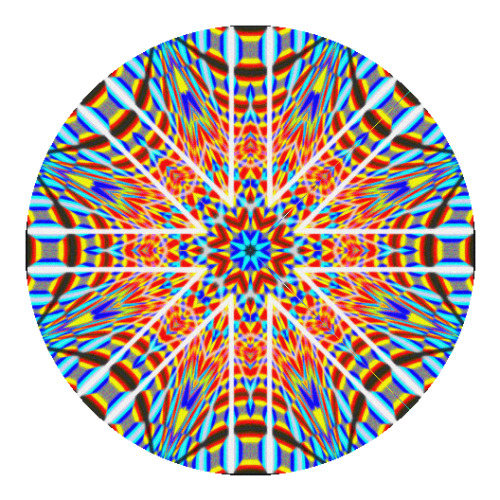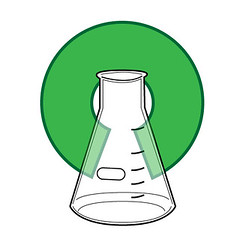To See More Clearly

A few days ago, Evan Selinger wrote an article on Augmented-Reality
Racism which has been (unfortunately) gaining some traction around the web.
I say ‘unfortunately’, because Evan is a sharp and insightful thinker who can
translate dense philosophical ideas into nuanced and popular forms (see his
July article on The
Philosophy of the Technology of the Gun for a great example), and
Augmented-Reality Racism is not that. Since I think there’s some merit to the
premise, I’d like to take my own whack at it.
Augmented
reality (AR) takes modern computing technology and puts it on the bridge of
your nose, interlaying projected images and sounds with your view of the world.
Evan hypothesizes that such a technology could be used in a racist manner,
either to ‘erase’ people of a certain race from view or to become super-aware
of their presence (pulse-Doppler blackdar?).
He notes that technologies have frequently embedded racist agendas, like the example
of Robert Moses’ low bridges on the Long Island Parkway, designed to block
buses--full of black people from the city--from the beaches. Evan concludes by
wondering if augmented realities designed to individualize and humanizing the
masses in the crowd might be a good way to build social bonds and empathy.
There’s an irritating floppiness to the scenario (does
racist AR obscure people or highlight them?), but more fundamentally, the
article fails to think deeply about augmented reality or the relationship
between technology and race. First AR: Augmented reality is much more than the
visible front-end of a head-mounted display. AR (properly, Nathan Jurgenson’s
definition of Mild
Augmented Reality) is the belief that “The digital and physical are part of one
reality, have different properties, and interact.” It’s about “Spiming” as much of the world as
possible, so that the qualities and histories of objects can be viewed and
understood in those nifty heads-mounted displays.
In many ways, the world is already augmented. Any surface
covered with words and other signs and signifiers, which in certain places can
be pretty
much all of them, is already augmented. Awnings block the rain and
advertise stores. Packages conceal the materiality of their contents, while displaying
an image. What makes the new augmented reality unique is that digital
information is fluid, protean, infinitely customizable and transformative. Much
like alchemists, modern entrepreneurs invoke a quicksilver digital as they
attempt to transmute the dull substance of commerce into glittering profits.
Race is a complicated topic, far too big to be contained
in a short essay, but one of the most interesting sections in Sorting
Things Out by Bowker and Star concerns the system of racial classification
used in Apartheid South Africa. From
1948 to 1994, every South African was classified as Black, White, Indian, or
Coloured, with segregated housing, employment, and legal rights. Apartheid was
an institutional system, a technology backed by a racial pseudo-science, for
legitimating and perpetuating the exploitation and oppression of a large
portion of the South Africa population. But it was also a system for generating order,
and Bowker and Star explain in detail the Kafka-esque nightmare of lives
upended by the arbitrary classificatory decisions of petty bureaucrats. To make
this absurd system work, the physical bodies of non-white South Africans had to
be ‘augmented’ with administrative tests and pass books detailing precisely
what race a person belonged to.
Now, contemporary America is not nearly as racist as apartheid
South Africa, but race still matters here, whether it’s on the census form, or
in the lived experience of people who experience prejudice, police brutality, and
shorter life expectancy. What I find interesting is that as America has moved
away from the worst excesses of Jim Crow, racism only becomes visible through
technology. We know that the NYPD is racist from their own data on Stop
and Frisk, which records statistically higher numbers of searches for
African Americans and Hispanics and fewer cases of illegal drug or weapon
possession. If you buy the results from
the Implicit Association
Tests, pretty much everybody has some degree of racist sentiment. Racism as
a matter of systemic bias, rather than overt discrimination, is only revealed through
the augmented reality of statistics and demographics, which attach data to
people.
There are also interesting patterns in how people of
difference races and classes use technology, for example the now classic
description of MySpace
as a ‘digital ghetto’ afflicted by ‘white flight’, or how twice as many African-Americans
use
cell phones as their primary form of internet access compared to whites. Race in America is more than skin color; it’s
also cultural, in patterns of speech and metaphor. Even bad ideas sound
plausible when presented articulately, with clean graphic design and
proofreading. I wonder what would happen to political discourse if we removed
this embedded bias towards certain authoritative voices by making everybody
present their ideas in ERMAHGERD
or after nurbling.
Making the form of arguments identical (and ridiculous) might help us focus on
their contents.
To return to the premise of the Augmented Reality racism,
I’d take the opposite tack from Evan. If race is a matter of surface
appearances, than an augmentation that erases these surface differences is
likely to make us less racist on an individual level. To flip a popular saying,
on the internet we’re all dogs. And
while I’m sure there are some Racial
Holy War (link warning: extreme racism) types who would enjoy knowing
precisely how many ‘mud people’ there are in a three-mile radius so they could
feel threatened and hateful all the time, for most people being more aware of
the statistical
and systemic patterns of racism (link warning: awesome maps) is useful tool
to engage forms of social justice we are currently ignorant of. As for
humanizing people, maybe it’s holiday misanthropy, but most people are kinda terrible (link warning:
internet Nice Guys), and we probably don’t want to know how much they enjoy Here Comes Honey Boo Boo, or their views
on gun control, or the contents of their fridge. Apathy is the lubricant of
urban living.
Evan opened with a story about his very Jewish
grandmother, and so I’d like conclude with a story about my equally Jewish
great-Grandmother, who had very poor eyesight and only got her first pair of
glasses late in life. Right after getting her new glasses, she went for her
usual walk around the neighborhood with her daughter, and began to sob.
“Ma, why are you crying?” My grandmother (then a young
woman) asked her mother.
“Everybody looks so sad,” The old lady said, “Before
I could see, I thought they were smiling all the time.”

